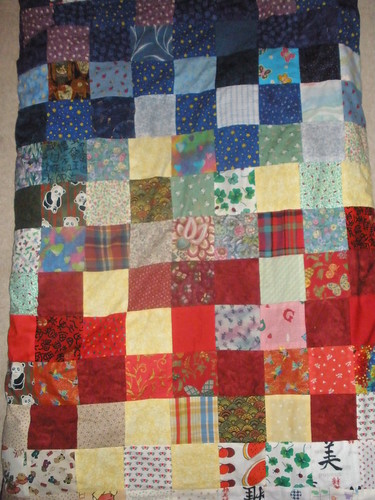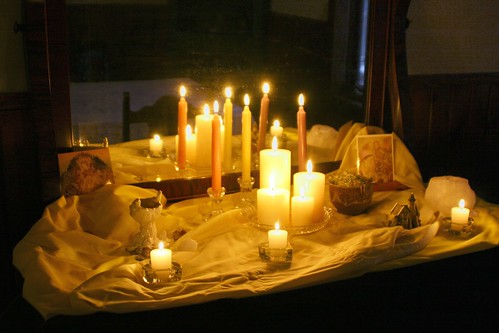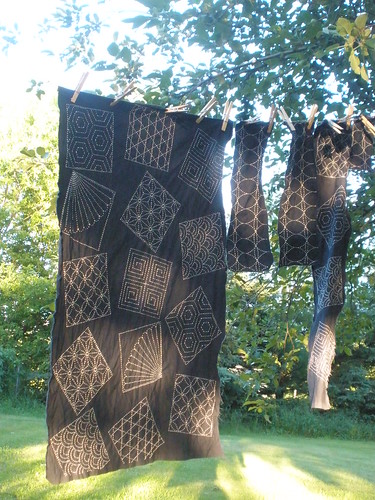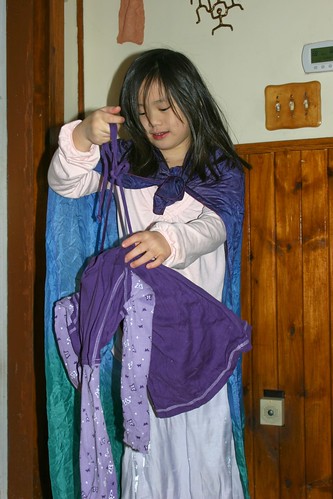Put a star next to the items that you would normally use over the next few days. Next to each starred item, figure out if you're going to eliminate or mitigate the use of the item.
This is an activity that I'd like to come back to at some point. Right now, I have quite a few things that are needing more attention that I need to address first. When things slow down a bit, this would be a great exercise to do.
Unplug, Power Down, Go off the Grid
Another idea that the Experiment suggested was to unplug, power down, or go off the grid. For the truly adventurous, they suggested turning off the electricity and see what happens.
I can tell you what happens here when the electricity goes off (most often during the summer when there are major storms going through the area). If the electricity goes off during the day, we don't open the freezer or refrigerator for fear that we'll lose all our food.
After that - and if it is safe to stay in the home and not go the basement to wait out the storm (e.g., a tornado is headed towards the area), then we end up playing games, reading, or cleaning the home.
We play with the dogs and cats; we play the piano; or we simply watch the storm (often times the clouds and lightening put on a rather impressive show).
An interesting cloud that dropped down out of the clouds above it.
Some ideas for change include:
Cut Back on the Heating and Turn Your Themostat to as Low as it will Go
During the day, I turn the thermostat to 68 degrees and at night to 60 degrees. This is a change from keeping it around 70-71 degrees during the day and 65 at night many years ago. Last winter, at night I kept the home at 62 degrees. Gradually decreasing the temperature over the years has helped everyone adjust to the change.
As soon as the weather is warm enough in the spring (over 40 degrees), I turn off the heat for part of the day and often times at night. Sometimes the nights do get a bit chilly, but I have many handmade quilts and blankets in the closet that can be used. Several of the quilts are made with wool from sheep that I had here in the '90s, and are incredibly warm.
Quilt I made for Sophia to celebrate her adoption.
The fabric squares are from family and friends.
Each square came with a wish/thought for her.
It's important - at least in this house (which was built in 1890) - to not be overly eager and turn off the heat too soon. If I do that and it gets well below freezing, the pipes in the basement can freeze (and could burst) resulting in a lot of water damage.
Wake up with the Sun, and Go to Bed When it Sets
In the summer time when the sun rises around 4 a.m. and sets around 9:30 or 10 p.m., this is a very easy schedule to follow. In the winter, the sun rises between 7:30-8:00 a.m. and sets between 4:00-5:00 p.m. (depending on the day/month). Around the winter solstice, there is about 8 hours of sunlight.
The point of doing this is that if you get up and go to bed when the sun rises/sets, you'll use less electricity and artificial lighting/illumination.
Use Beeswax Candles If You Must Be Up in the Dark
The No Impact Week Experiment suggested using locally-made beeswax candles if you must be up when it is still dark. I'm not sure how many one would need to sufficiently be able to see well, but I'd imagine it would be quite a few.
The smell would be amazing and seeing all the flickering lights would be beautiful. Honestly, I'm not sure how practical (or cost-effective) this would be. Sounds nice for a change of pace or to celebrate a special holiday or birthday.
Candles on Candlemas
We ate dinner one night using only the light from the candles.
Dry Your Clothes on a Clothes Line or Rack
When the weather is above freezing, I do dry the clothes, towels, sheets, and rugs outdoors. There is no comparison to the smell of clothes that have dried outside. They smell fresh and clean. My parents use to do this as well, stringing a clothesline between a tree and the posts that supported the deck.
Many years ago, I strung a clothesline from the apple tree near the home to the barn. The line was too long, and it sagged when the clothes were put on it. Some each touched the ground. Put a piece of wood with two nails on top (the clothesline went between them), and propped it up. Didn't work.
Next option: I put in a square clotheline in a sunny spot in the backyard. It worked out great until I didn't work around the line (in a square) and loaded one side first and then began work on the next adjacent side. The one side became too heavy and the metal post snapped. So much for that option.
Sashiko fabric that I hand-embroidered
drying on the clothesline during the summer.
Third attempt at drying clothes outside (and the one I've used ever since): drying them on the chainlink fence. I lay the larger items over the fence (e.g., clothes, sheets, blankets, towels) and tuck the smaller items (e.g., socks, potholders, dishcloths) into the holes. This has worked out very well for many years, and I look forward to being able to dry the clothes outside again.
I was curious one year to see if I could dry clothes outside in the winter (in Minnesota). There was a neighbor who use to dry her clothes on a clothesline in the middle of winter. I'm not sure if her clothes dried or not. Mine ended up freezing into odd shapes - like this one:
Sophia holding one of her frozen shirts after
I wanted to see if clothes could be dried in the winter.
Use Alternatives to Refrigeration
This is an interesting article about zeer pots that are used in Africa. According to the article, "The zeer is a large pot inside which fits another smaller pot with a clay lid. The space between the two pots is filled with sand, creating an insulating layer around the inner pot. The sand is then kept damp by adding water at regular intervals — generally twice a day — reducing the temperature within the inner post decrease.
Each zeer can contain 12 kg of vegetables, and costs less than US$2 to produce.
Experiments assessing its ability to extend shelf life show that tomatoes and guavas can be kept for 20 days, compared to just two without.
Zeer pots in Africa
For One Day Use Your Computer Only for Work
With the exception of briefly checking my computer in the morning and late-afternoon today to check emails and do a bit of work for my shop (Harvest Moon by Hand), I didn't use it all.
I ended up finishing a batch of homemade mini-notecards, paying bills, balancing the checkbook, spending the day with my parents to celebrate my dad's 79th birthday (I helped them with chores around their home, took them to various places where they needed to shop, we went out to lunch, and then to movie), went to the library and picked up books I ordered, and came home.
It was a long, but nice day. I enjoyed being able to spend the day with my parents...and helping them do things they no longer can do.







1 comment:
I'm impressed with how you're doing with this challenge. (I agree that trying to live by beeswax candlelight in the evenings would be pretty impractical. Beeswax candles, though my favorite by far, are very expensive.)
Post a Comment